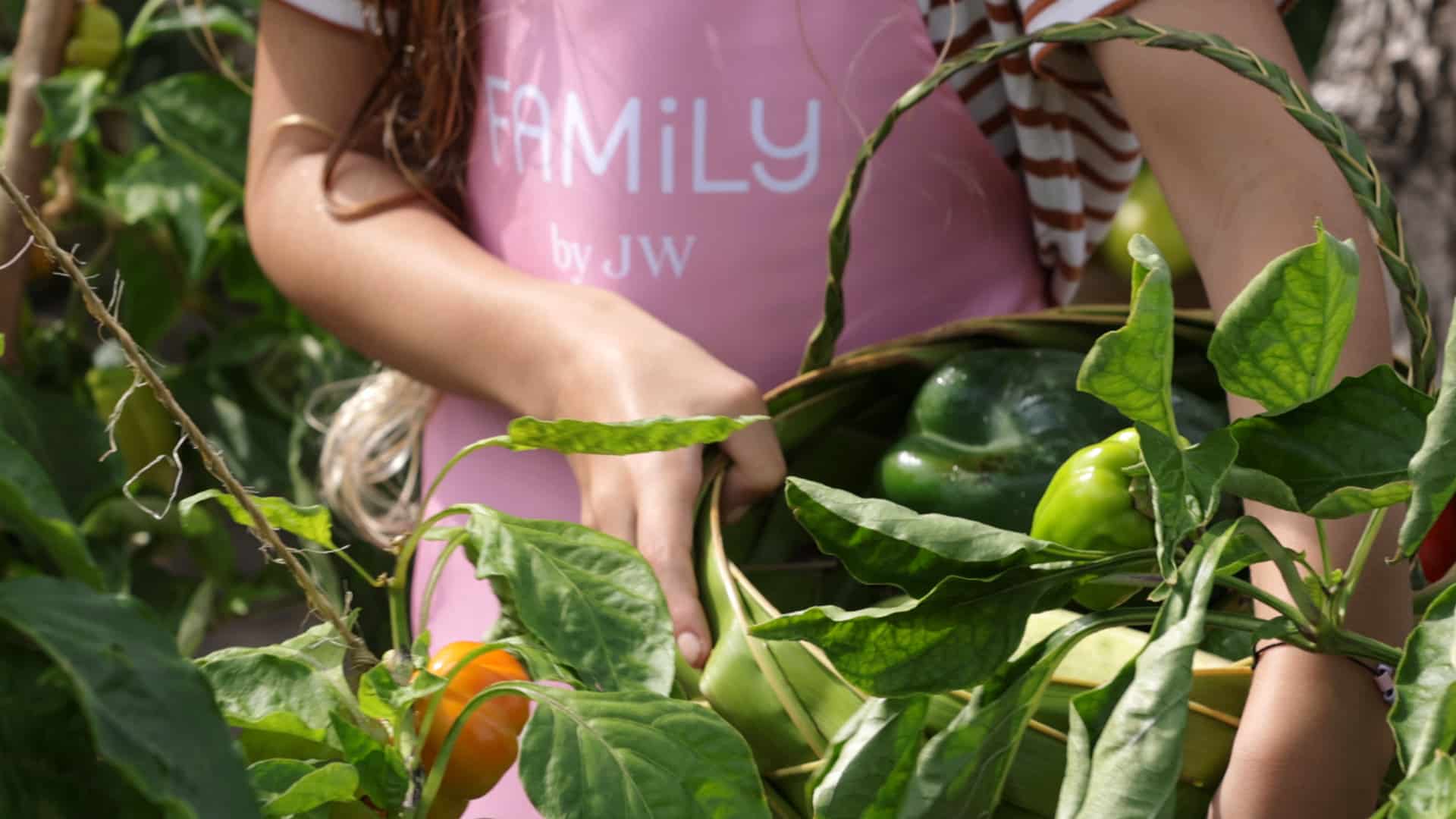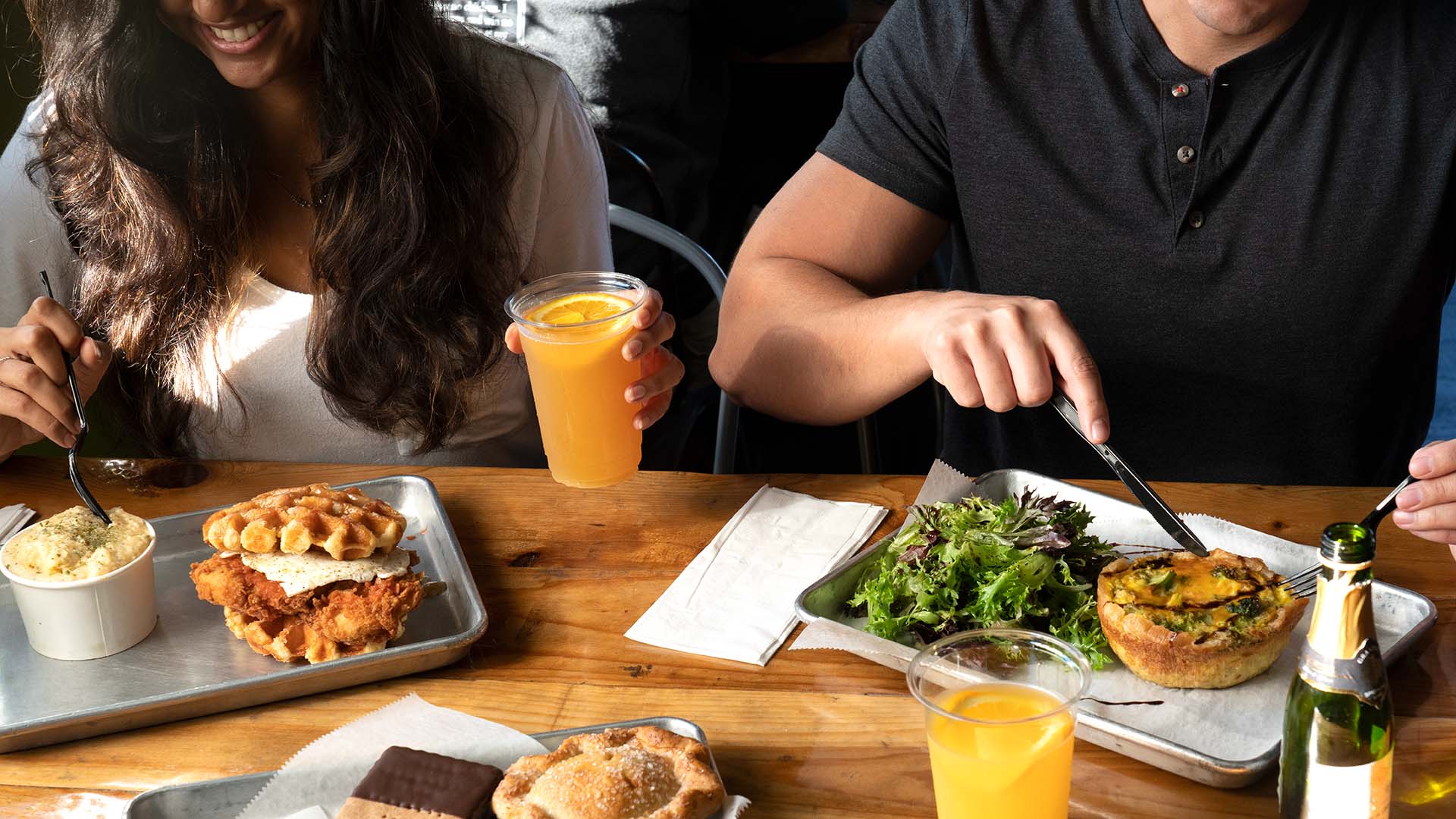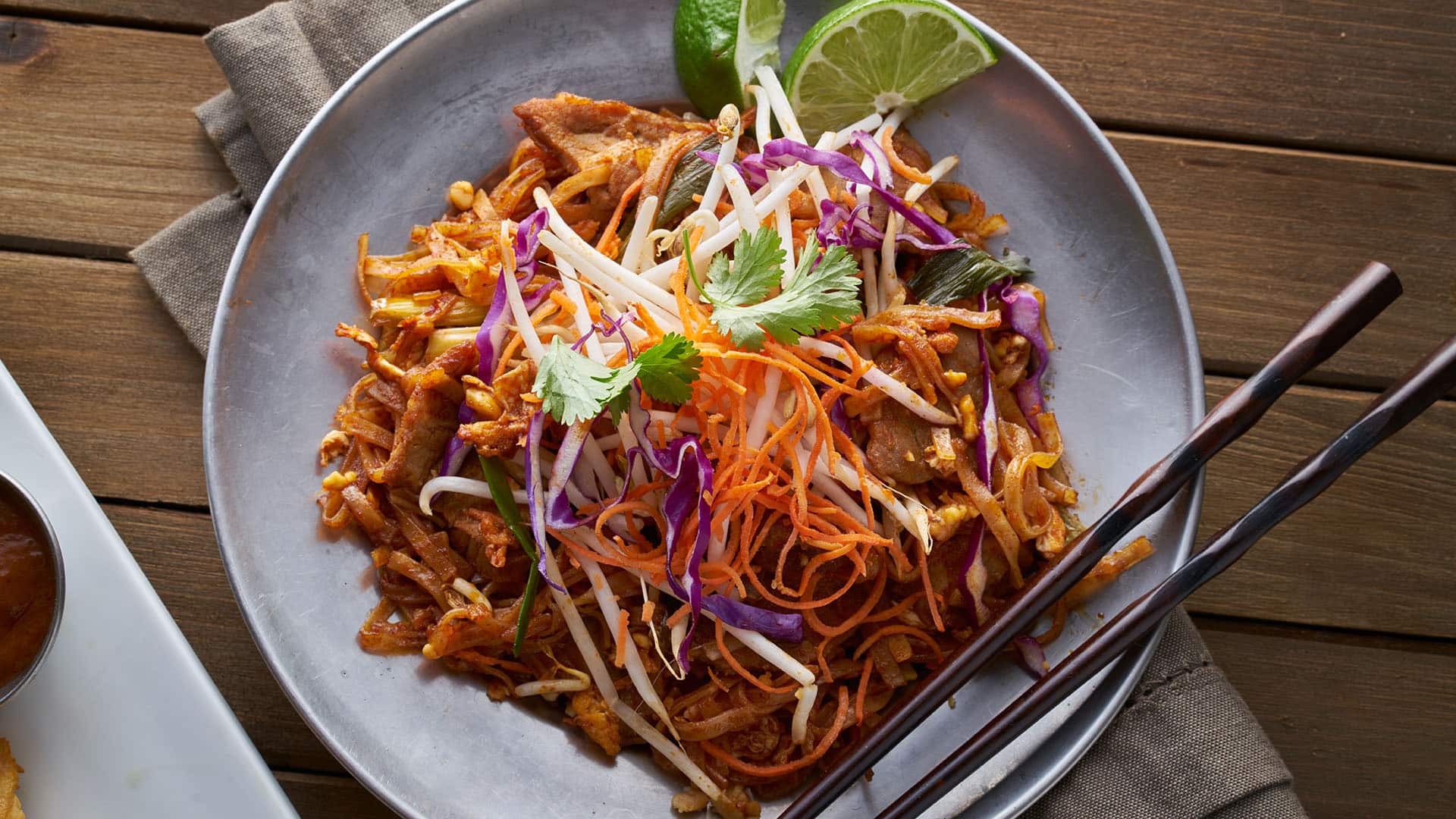
Pad Thai’s origins might surprise you. (Photo: Getty Images)
Eat + DrinkLearn the Surprising Origins of Comfort Food Around the Globe
By David FarleyAs I sat in the hip Lisbon restaurant Cantinho do Avillez, I took one of the battered and fried green beans that sat on a plate in front of me — filled with an old Portuguese dish called peixinhos da horta (little fishes from the garden) — and thought, “Is this really the green bean that changed the culinary world?”
In order to answer that question, we have to go back to the 16th century when Portuguese sailors ended up on the shores of Japan. During lengthy trips at sea, one of the sailors’ favorite foods was peixinhos da horta because it was fried and therefore better preserved.
Portuguese people would also eat peixinhos da horta around the time of Lent, or ad tempora cuaresma in Latin, because eating these fried morsels felt like they were still eating meat, which is verboten during Lent.
It was no exception for the Portuguese sailors who ended up in Japan; they were well-stocked with the fried green beans. The sailors stayed a while — about 100 years, in fact — until they were eventually banished for trying to push their religion onto the local population.
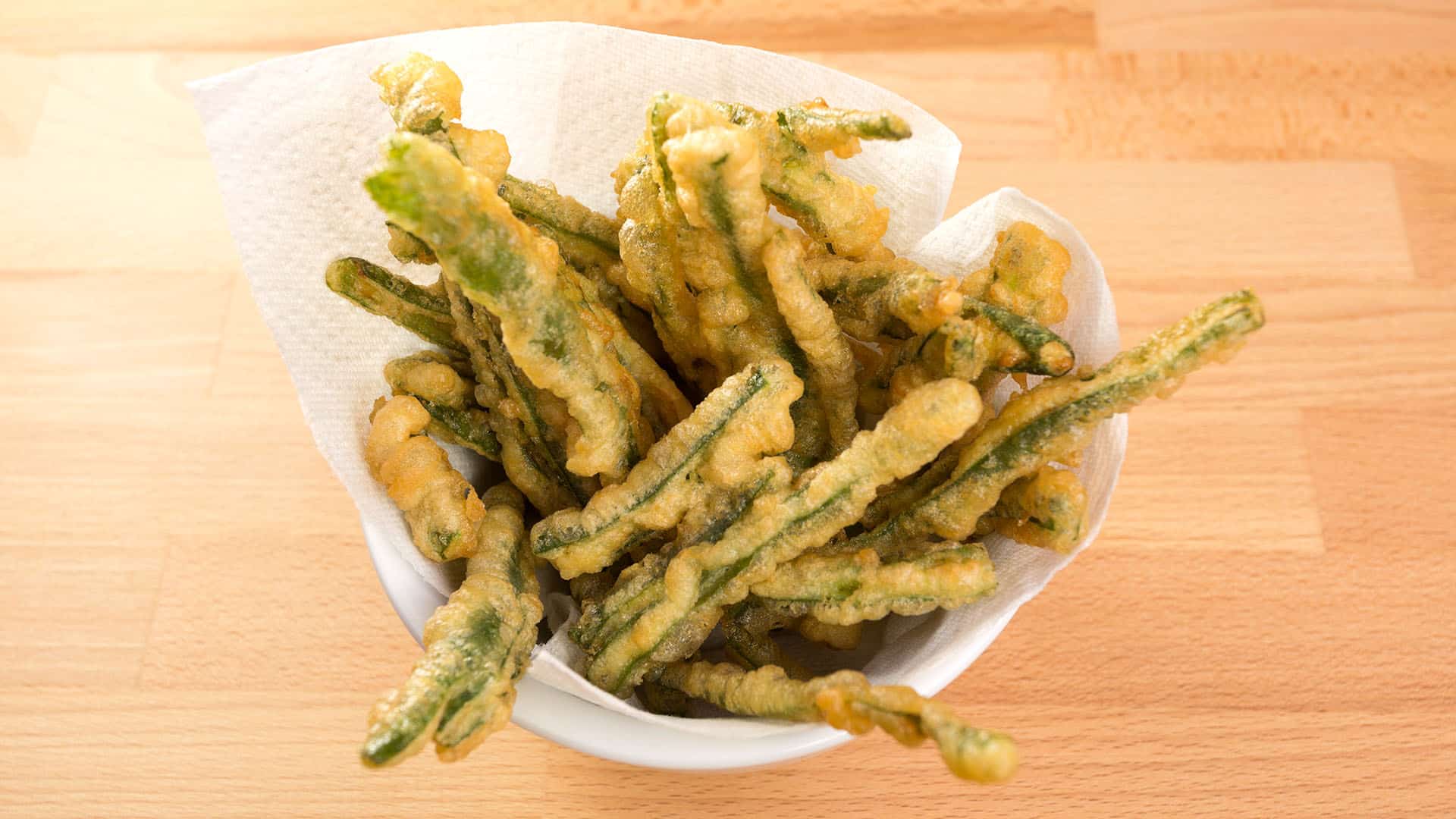
As the final Portuguese ships sailed away from Japan, their influence on this island nation had become indelible: They had left something behind in Japan — their recipe for peixinhos da horta. The Japanese people took that Portuguese recipe and expanded it to other vegetables and fish. They called it “tempura,” mistakenly thinking it was the Portuguese name for the dish, since it was often eaten around Lent, or ad tempora cuaresma. Thus, a new style of cooking (and eating) in Japan was born.
This isn’t the only surprising origin story to the comfort foods we know and love and eat regularly around the globe. In fact, if you scratch the surface of a lot of recipes, there are many odd origin stories that are the result of larger forces of history — colonialism, war, the end of empires — bringing together two unlikely or surprising culinary cultures. You don’t even need to travel back several centuries to find examples.
Tacos al Pastor: The Taco by Way of Beirut
The Ottoman Empire occupied Lebanon beginning in the 16th century, and when the empire crumbled in the wake of World War I, it sent the region into chaos, including Beirut, the biggest city in the area. Many Lebanese people fled the region, some going as far as North America.
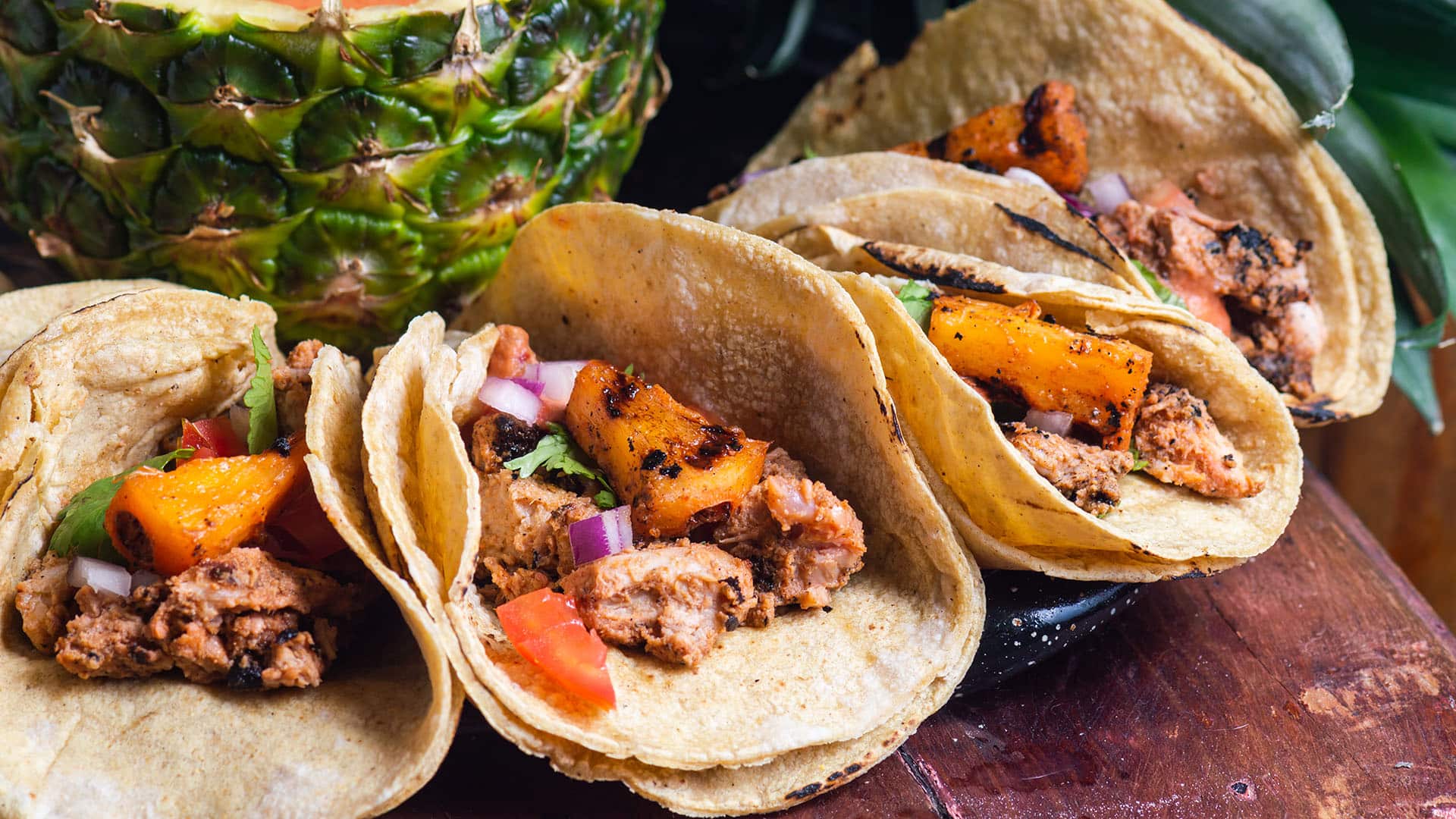
For those who ended up in Mexico — and roughly 100,000 Lebanese people did — they brought with them their recipe and technique for roasting meat, which consists of slowly turning a hunk of lamb on an upright spit — like what you see at kabob shops around the world today.
Lebanese immigrants settled in Yucatan, then Puebla, and eventually Mexico City and opened up kabob shops to make a living. To get Mexicans interested in trying their kabobs, they created the “tacos Arabes,” or “Arab tacos,” essentially slow-roasted lamb folded into pitas.
The locals loved it — so much so that Mexicans began making it themselves but switched out the lamb for pork and the pita for a tortilla. They renamed this reconditioned recipe “tacos al pastor,” the “pastor” a reference to lamb, in honor of the dish’s origins. After the addition of chunks of pineapple, plus some salsa, eventually the taco al pastor spread across Mexican menus.
And of course, as this delicious dish spread through migration, tacos al pastor are now likely to be on the menu of the taqueria nearest to your home, wherever in the world you live.
Banh Mi: The Sandwich That Colonialism Created
By 1864, France had taken all of southern Vietnam, then took control of northern Vietnam in 1887, and formed French Indochina. Yet, even this far from home, the Gallic nationals couldn’t live without their baguettes and pâté.
And so it’s no surprise that in Indochina, of which Vietnam had been a part, French food products followed the French wherever they planted their tricolored flag.
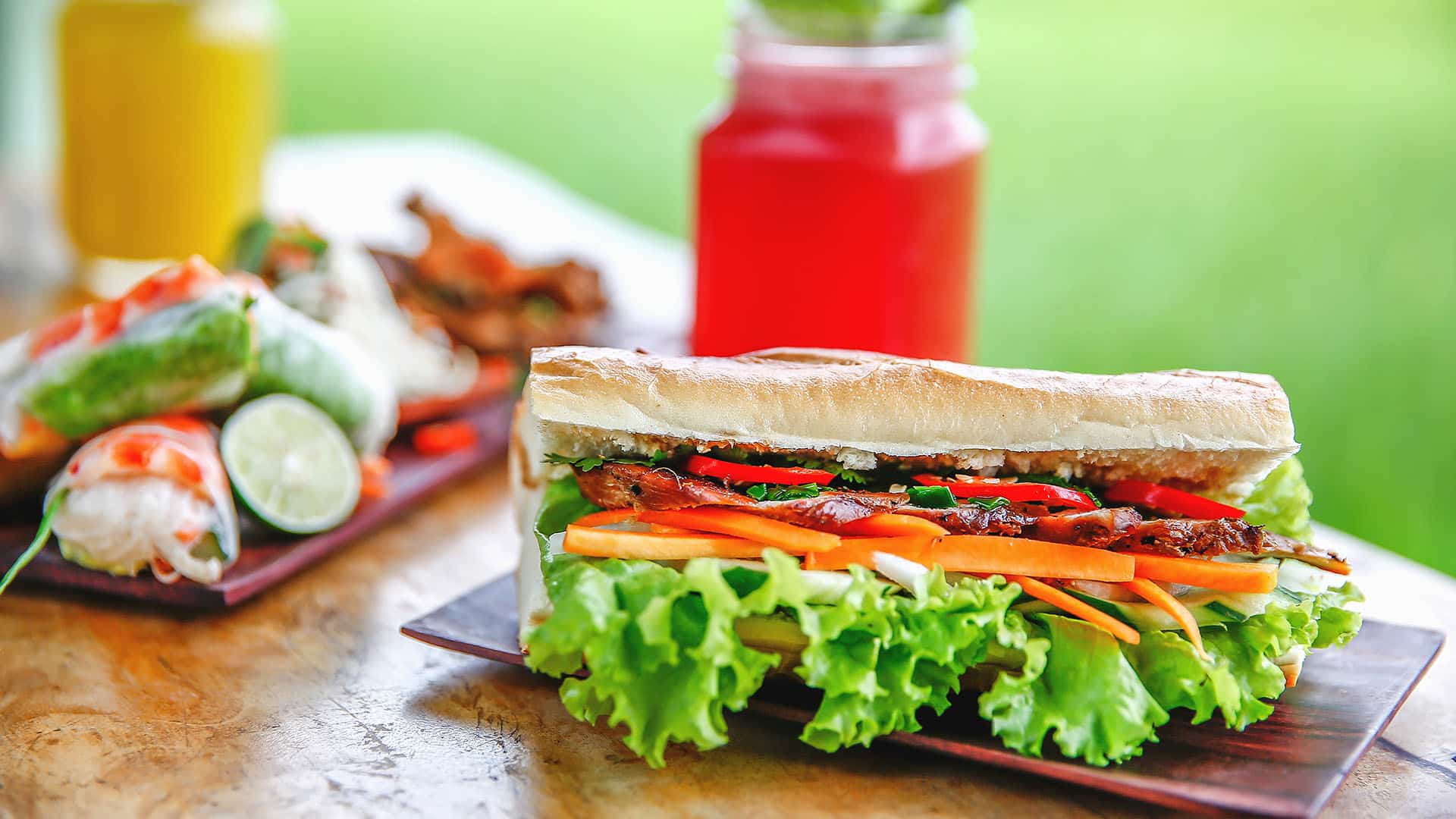
By the time the French were driven out — specifically in 1954 after the battle of Dien Bien Phu — a sandwich had emerged on the streets of then-Saigon (now Ho Chi Minh City).
The inside of a French baguette was slathered in pâté and butter and then stuffed with pork cold cuts, steamed pork roll, sliced cucumbers, pickled carrots, daikon, cilantro and fresh chilis.
It was called the banh mi, which simply means “bread” in Vietnamese, but it’s so much more than just that; it’s a hybrid of French and Vietnamese culinary culture and one of the best sandwiches on the planet.
Pad Thai: The Legendary “Thai” Dish with Chinese Origins
The Chinese community in Thailand is the largest ethnic minority in the Southeast Asian country. People from China began gravitating toward Thailand about 250 years ago. And like many migrating peoples, they brought their recipes with them.
Fast forward to 1932. Thailand went from an absolute to a constitutional monarchy. And when it became an autonomous nation in the first half of the 20th century, the government of Thai Prime Minister Plaek Phibunsongkhram wanted to modernize the country and also create a sense of national identity: a “Thai-ness.”
Part of that mission meant creating something edible that could become the national dish of Thailand.
No one is quite sure how the prime minister ended up creating pad Thai — though some sources claim the dish was first cooked in his household — but suddenly in the 1930s a recipe for it was born, and the wok-fried noodle-and-egg dish suddenly became ubiquitous around Thailand.
Indeed, some food historians say pad thai was the first Thai dish with a standardized recipe, and the fact that it was handed down from the top helped spread the dish around the country with ease.
What makes this story even more interesting is that when you take a deeper look at Thai culinary history, there’s something unexpected about pad thai. Rice is the staple food of Thailand. While much of the flavor profile of pad thai is Thai and the sauces and pastes that some chefs add to the dish are also of Thai origins, the base of the dish — the stir-frying of noodles in a wok — is Chinese.
What is still known as the Thai national dish — pad thai (nearly every non-Thai person’s first introduction to Thai cuisine) — likely came from the Chinatown in Bangkok, where thousands of ethnic Chinese still reside.
Currywurst: The Accidental Berlin Street Snack
On September 4, 1949, a strange thing happened at a food cart in Berlin’s Charlottenburg district, specifically, on the corner of Kaiser-Friedrich Strasse and Kant Strasse. That’s where enterprising (and apparently creative) Herta Heuwer had a food cart.
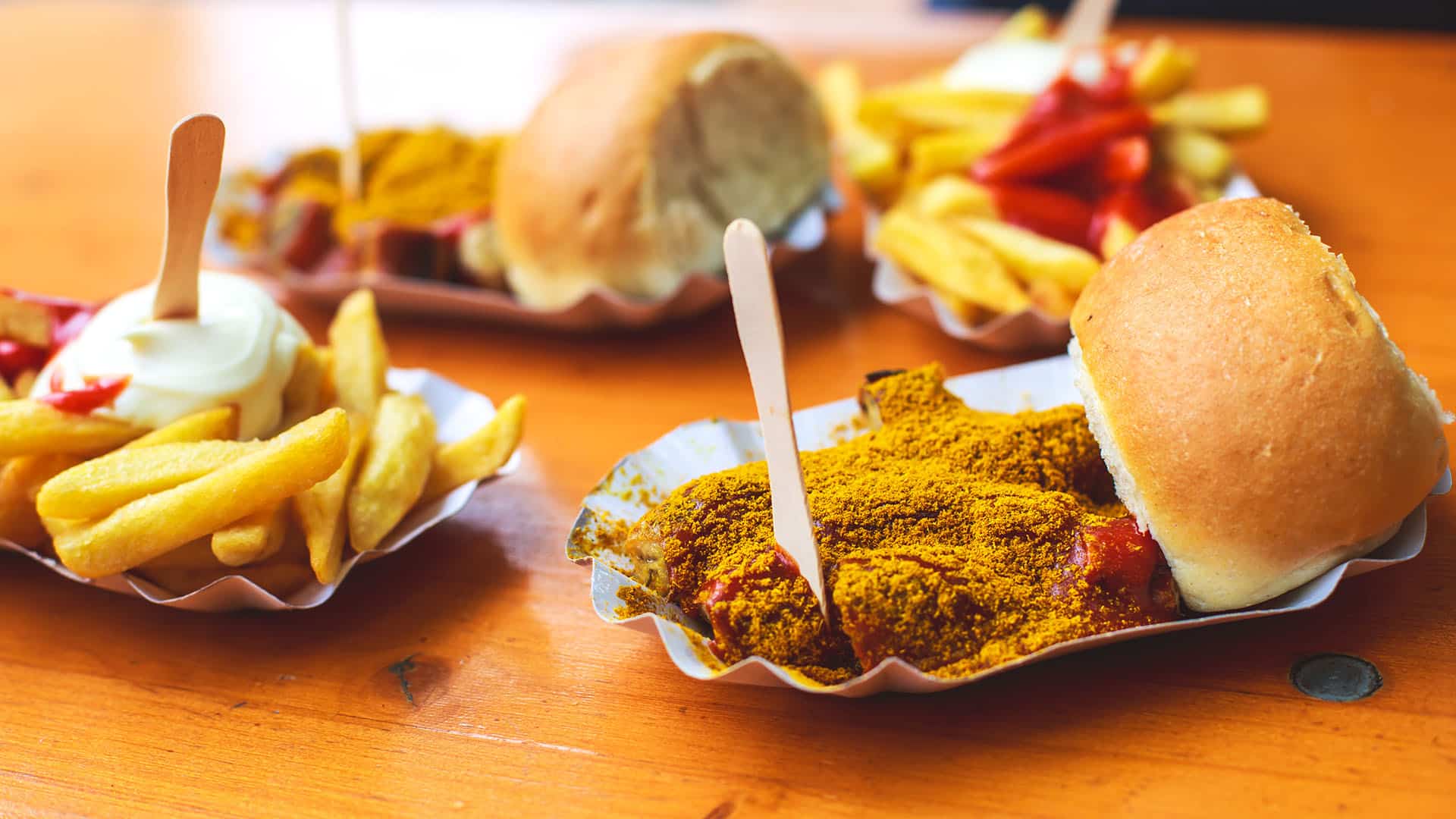
This was the post-World War II era in Berlin when the allied powers — the United States, the French, the British and the Russians — were occupying separate parts of the German capital.
Herta had just made a trade with some British troops: They would give her a can of curry powder and a bottle of ketchup if she gave them some booze (or, depending on who you ask, a bottle of Worcestershire sauce).
Whatever the case, Herta was bored, so she decided to do some experimenting. She sprinkled some curry into a blob of ketchup, and added a pinch of sugar and a few drops of Worcestershire sauce. She mixed it all up and then slathered it on some slices of wurst, or German pork sausage.
She offered the new concoction to some passersby, and they loved it. Soon, construction workers, who were nearly ubiquitous in Berlin at that time, were coming by asking for it. It was cheap and exotic and it had a lot of protein.
Herta first named the dish “chiliup,” even going so far as to patent the name in 1951. She even opened her own restaurant — the main dish, of course, being this ketchup-and-curry-slathered sausage — that stayed open until 1974.
What Herta called the “chiliup” we now know as the currywurst, and it is one of the most popular street foods in Berlin and many other German cities.
Like a lot of the comfort food dishes we eat and take for granted today, the currywurst came into being due to history-making events, a little bit of creativity and a desire to eat something delicious.





